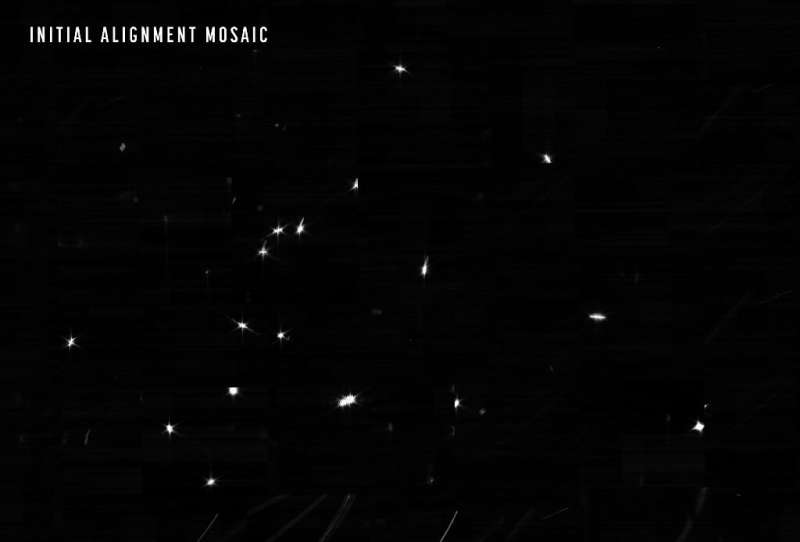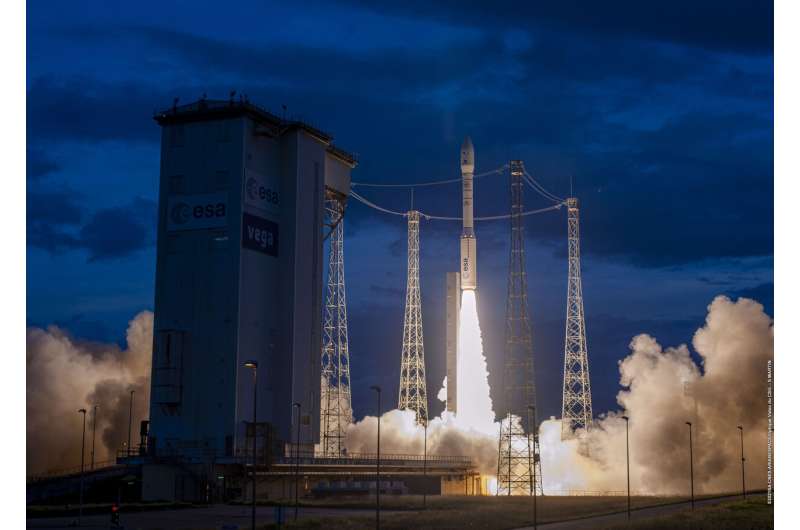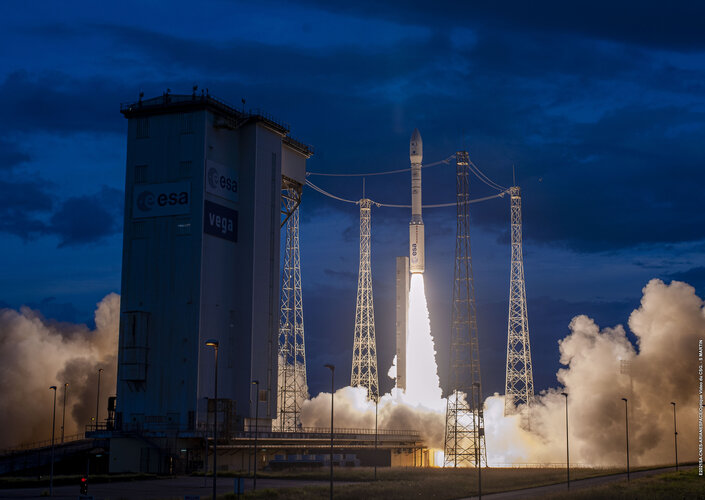
Copernical Team
The devil's in the detail
 Chaotic mounds, wind-sculpted ripples and dust devil tracks: this image shows a fascinating and otherworldly landscape near Hooke Crater in Mars' southern highlands.
The image was taken by the CaSSIS camera onboard the ESA/Roscosmos ExoMars Trace Gas Orbiter (TGO) on 1 February 2021, and shows part of Argyre Planitia, centred at 46.2 S/318.3 E.
This type of scenery is similar to 'cha
Chaotic mounds, wind-sculpted ripples and dust devil tracks: this image shows a fascinating and otherworldly landscape near Hooke Crater in Mars' southern highlands.
The image was taken by the CaSSIS camera onboard the ESA/Roscosmos ExoMars Trace Gas Orbiter (TGO) on 1 February 2021, and shows part of Argyre Planitia, centred at 46.2 S/318.3 E.
This type of scenery is similar to 'cha Webb telescope spots its first star—and takes a selfie

Star light, star bright, the James Webb Space Telescope has seen its first star (though it wasn't quite tonight)—and even taken a selfie, NASA announced Friday.
The steps are part of the months-long process of aligning the observatory's enormous golden mirror that astronomers hope will begin unraveling the mysteries of the early Universe by this summer.
The first picture sent back of the cosmos is far from stunning: 18 blurry white dots on a black background, all showing the same object: HD 84406 a bright, isolated star in the constellation Ursa Major.
ESA's Vega rocket marks ten years with countdown to more powerful successor

Ten years ago today, ESA opened a new era of independent access to space with the inaugural flight of its small launcher Vega. Flying from Europe's Spaceport in French Guiana, Vega has gone on to earn a reputation for precision and versatility in anticipation of a more capable version, Vega-C.
Placing medium-sized satellites into the low Earth polar orbits that are ideal for scientific and Earth observation missions—about 1430 kg to 700 km—is Vega's trademark capability. But the vehicle has also delivered an ESA science mission to deep space—the gravitational wave detector demonstration mission, LISA Pathfinder—and followed the equatorial flight path needed for an experimental IXV "lifting body" payload that paved the way for a European launchpad-to-runway space transportation service, with ESA's uncrewed Space Rider vehicle.
ESA’s Vega rocket marks ten years with countdown to more powerful successor

Ten years ago this week, 13 February 2012, ESA opened a new era of independent access to space with the inaugural flight of its small launcher Vega. Flying from Europe’s Spaceport in French Guiana, Vega has gone on to earn a reputation for precision and versatility in anticipation of a more capable version, Vega-C.
Week in images: 7 - 11 February 2022

Week in images: 7 - 11 February 2022
Discover our week through the lens
Snow-washed Greece
 Image:
Image:
Rare snowfall over Greece may be the new normal.
For the second year in a row, Greece experienced unprecedented amounts of snow, blanketing the country in white. ESA astronaut Matthias Maurer took this bird’s eye view of the town of Chalcis, along the Euboean Gulf, from the International Space Station in early February.
He posted to social media, noting, “In keeping with its national colours, wintry Greece presented itself in blue and white.”
Storm Elpida swept across Greece and also parts of Turkey, causing mass disruption to the Mediterranean country known more for white-sand beaches and whitewashed homes than snow.
While hard
Photons received: Webb sees its first star – 18 times

The James Webb Space Telescope is nearing completion of the first phase of the months-long process of aligning the observatory’s primary mirror using the Near Infrared Camera (NIRCam) instrument.
Rocket startup's Florida launch debut ends in ocean crash
A rocket startup's big Florida launch debut ended with all four mini satellites destroyed Thursday.
California-based Astra sent its rocket soaring from Cape Canaveral after multiple delays, including a last-second engine shutdown Monday. The 43-foot (13-meter) rocket arced through a clear afternoon sky out over the Atlantic, carrying small research satellites sponsored by NASA.
But shortly after the first-stage booster dropped away, onboard cameras showed the second stage igniting and appearing to tumble. The video cameras went dark less than four minutes into the flight and the airwaves grew silent.
A launch commentator finally confirmed that the payloads failed to reach orbit. Three of the CubeSats were built by universities in Alabama, New Mexico and California, while the fourth was from NASA's Johnson Space Center in Houston. All ended up crashing into the ocean.
Astra CEO and founder Chris Kemp apologized for the loss in a tweet: "I'm with the team looking at data, and we will provide more info as soon as we can."
NASA mission manager Hamilton Fernandez reiterated the space agency's support following the accident.
"Missions like these are critical for developing new launch vehicles in this growing commercial sector," Fernandez said in a statement.
SpaceX's Elon Musk: 1st orbital Starship flight maybe March

SpaceX's Elon Musk said Thursday that the first orbital flight of his towering Starship—the world's most powerful rocket ever built—could come in another month or two.
While he anticipates failures, he's confident Starship will reach orbit by the end of this year.
Musk provided his first major Starship update in more than two years while standing alongside the 390-foot (119-meter) rocket at SpaceX's Texas spaceport. He urged the nighttime crowd, "Let's make this real!"
"This is really some wild stuff here," he said. "In fact, hard to believe it's real.
We explore - you benefit: Health, food, and climate
 Video:
00:04:45
Video:
00:04:45
ESA astronaut Thomas Pesquet shows how space technologies and research onboard the International Space Station are used for the benefit of people on Earth. Thomas explains how space research is relevant to three of the United Nation’s goals: Health (SDG3), Zero hunger and food security (SDG2), and Climate action (SDG13). The Sustainable Development Goals are the world's to-do list for people and the planet by 2030.
Learn more about the European space laboratory, the Columbus module, and four examples of how space exploration supports sustainable development in Europe and in Africa.
This video is Part 2 of a




































